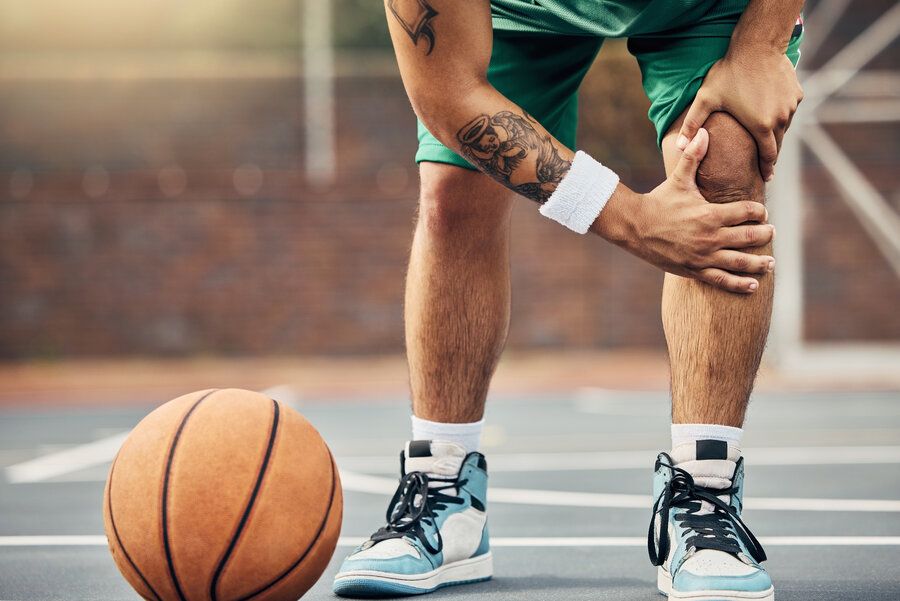A Patient's Guide to ACL Reconstruction
ACL reconstruction is a surgical procedure performed to repair a torn anterior cruciate ligament (ACL) in the knee joint. This article will provide patients with an in-depth guide to ACL reconstruction, including what to expect before, during, and after the procedure.

Contents
Understanding the ACL
The ACL is a ligament located in the knee joint that connects the thigh bone (femur) to the shinbone (tibia). The ACL provides stability to the knee and helps to prevent excessive forward movement of the tibia in relation to the femur.
Causes of ACL Injury
ACL injuries are most commonly caused by sudden twisting or pivoting movements, such as those that occur during sports activities like basketball, soccer, or skiing. Other causes of ACL injury that we have seen in our San Francisco orthopedic practice include patients who have suffered a direct blow to the knee, have landed awkwardly from a jump, and been injured due to a fall.
Symptoms of an ACL Injury
Symptoms of an ACL injury may include a popping sound at the time of injury, severe pain and swelling, limited range of motion in the knee, and instability or a feeling of giving way in the knee.
Diagnosis of an ACL Injury
An ACL injury can usually be diagnosed through a physical examination by a highly qualified orthopedic doctor like Dr. James Chen and a review of the patient's medical history. Additional diagnostic tests such as an MRI may also be necessary to confirm the diagnosis.
Non-Surgical Treatment Options for ACL Injuries
Non-surgical treatment options for ACL injuries may include physical therapy, rest, and the use of a knee brace. These options may be recommended for patients who have a partial tear or a minor injury that does not require surgery. Dr. Chen prioritizes non-surgical treatment except when surgical repair is absolutely necessary for the patient to regain full use of the knee without pain.
Preparing for ACL Reconstruction Surgery
If ACL reconstruction surgery is necessary, patients will undergo a series of pre-operative tests and evaluations. This may include blood work, imaging studies, and clearance from the patient’s other healthcare providers. Patients may also need to make certain lifestyle modifications, such as quitting smoking or adjusting their diet and exercise routine, to optimize their health prior to surgery.
Types of ACL Reconstruction Surgery
There are several types of ACL reconstruction surgery, including autografts (using the patient's own tissue) and allografts (using donor tissue). The most common autografts used in ACL reconstruction surgery include the patellar tendon, hamstring tendon, and quadriceps tendon. Allografts may be obtained from a cadaver or a live donor.
Risks and Complications of ACL Reconstruction Surgery
As with any surgery, there are risks and potential complications associated with ACL reconstruction surgery. These may include infection, bleeding, nerve damage, and blood clots. Patients should discuss the risks and benefits of surgery with their surgeon prior to undergoing the procedure.
Recovery and Rehabilitation After ACL Reconstruction Surgery
Recovery and rehabilitation after ACL reconstruction surgery typically involves a structured program of physical therapy and exercise. Patients may also be prescribed pain medication and other supportive treatments as needed. It is important for patients to follow their surgeon's instructions closely and to attend all follow-up appointments to ensure a successful recovery. San Francisco orthopedic surgeon Dr. Chen stays in close contact with his patients post-surgery to monitor their recovery process. He utilizes an app that patients use to report how they are doing and patients are able to contact him directly with any questions or concerns.
Returning to Activity After ACL Reconstruction Surgery
Returning to activity after ACL reconstruction surgery will depend on a number of factors, including the patient's age, overall health, and the type and severity of the injury. Patients should work closely with their surgeon and physical therapist to develop an individualized plan for returning to activity safely and gradually.
Long-Term Outlook After ACL Reconstruction Surgery
The long-term outlook after ACL reconstruction surgery is generally good, with many patients experiencing significant improvements in knee function and a return to normal activities. However, it is important to note that full recovery and return to high-impact sports may take several months or even up to a year. Patients of Dr. Chen enjoy higher than average satisfaction with the results of their ACL reconstruction surgery.
Frequently Asked Questions (FAQs)
How long does ACL reconstruction surgery take?
ACL reconstruction surgery typically takes between one and two hours to complete.
Will I be able to return to sports after ACL reconstruction surgery?
Many patients are able to return to sports and other high-impact activities after ACL reconstruction surgery. However, the timeline for returning to activity will vary depending on the patient's individual circumstances and should be discussed with the surgeon.
What should I expect during ACL reconstruction surgery recovery?
During ACL reconstruction surgery recovery, patients can expect to experience some pain and swelling in the knee, as well as limited mobility. Physical therapy and exercise will be an important part of the recovery process.
Are there any long-term risks or complications associated with ACL reconstruction surgery?
While the risks of long-term complications associated with ACL reconstruction surgery are low, some patients may experience arthritis or other joint problems later in life.
How can I minimize my risk of ACL injury?
To minimize your risk of ACL injury, it is important to maintain strong muscles and good flexibility in the legs, to use proper technique during sports activities, and to wear appropriate protective gear such as knee braces.
Schedule with Dr. James Chen
ACL reconstruction surgery can be a highly effective treatment option for patients with a torn ACL. By following the guidelines provided in this article and working closely with their surgeon and physical therapist, patients can achieve a successful recovery and return to normal activities with improved knee function. If you are experiencing symptoms of an ACL injury, be sure to contact Dr. James Chen right away to determine the best course of treatment.










